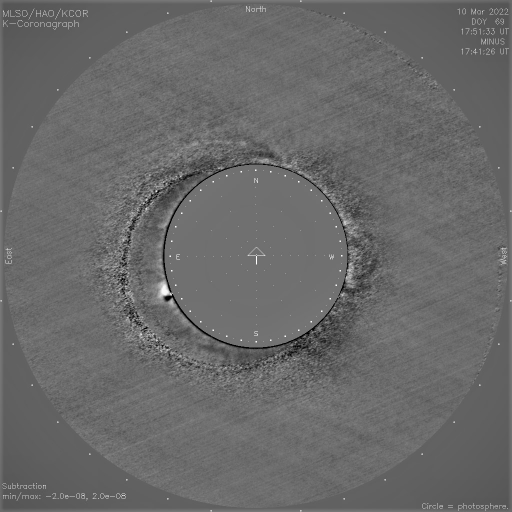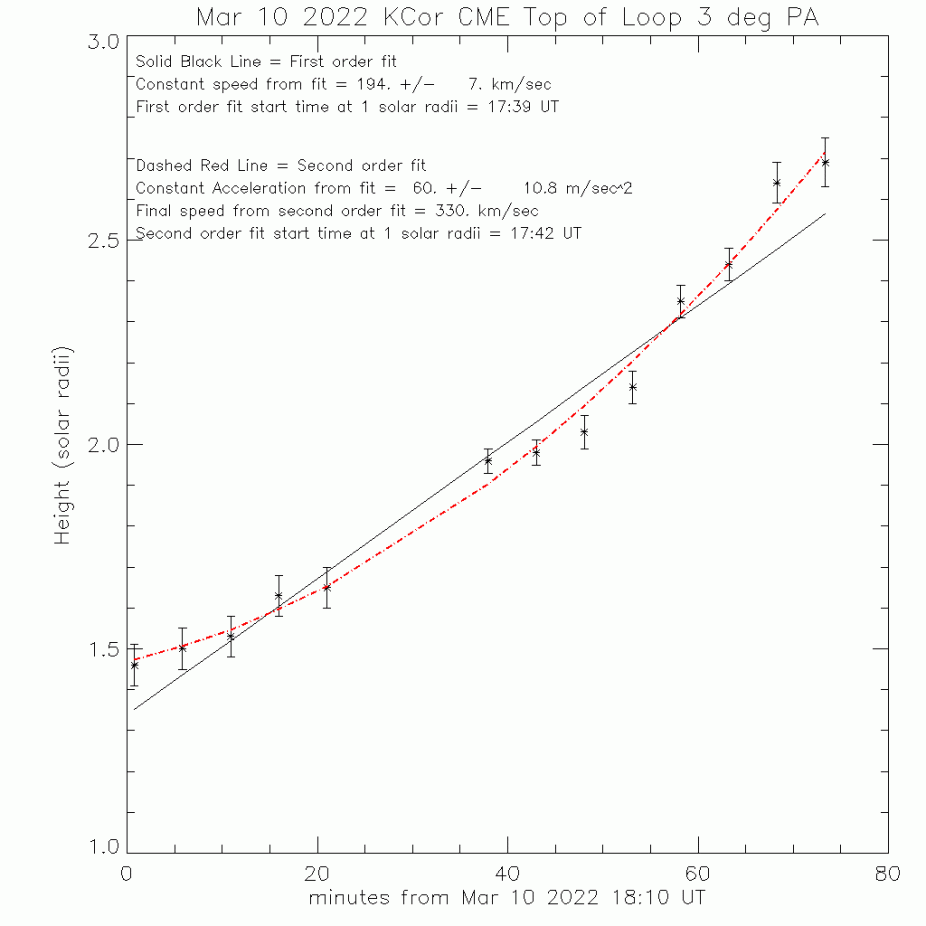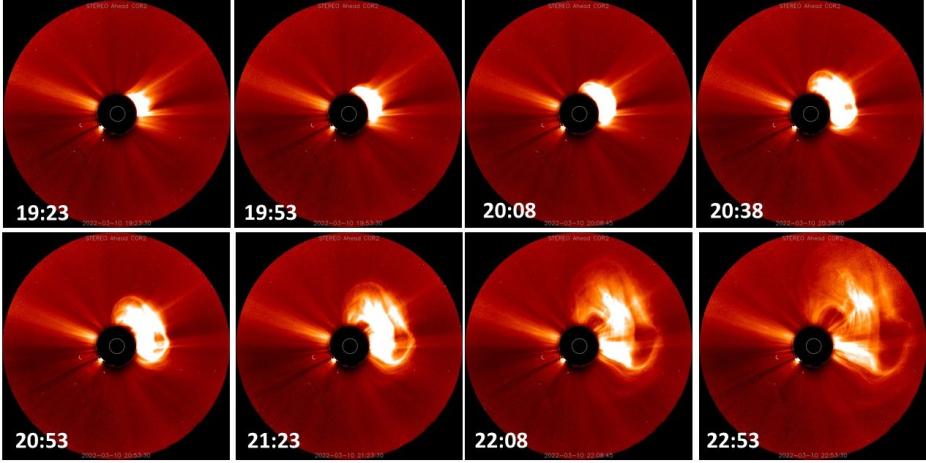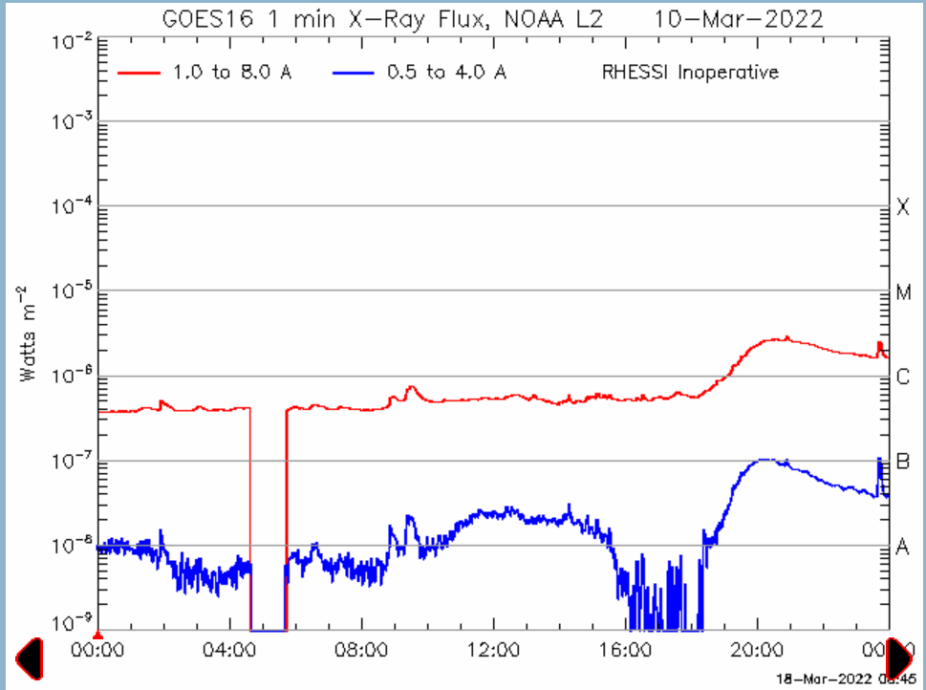2022-03-10: North Pole CME
Subtraction Movies


Time-height plot of CME trajectory on March 10, 2022 as measured from K-Cor subtraction images.
On March 10, 2022 at ~17:41 a CME was seen emerging over the north pole in K-Cor white light coronal observations as illustrated in the K-Cor subtraction movies above (with additional links at bottom of page). The loop-shaped CME accelerated through the K-Cor field-of-view (FOV) reaching a speed of 330 km/sec and an acceleration of 60 m/s2 by 19:24 UT at a height of 2.7 solar radii as shown in the time vs. height plot. The CME widened as it accelerated outward. The CME width was measured at 1.7 solar radii. It increased from ~53 degrees wide at 18:48 UT to ~66 degrees at 19:24 UT.
A fainter loop with outflow was seen in K-Cor data to emerge from the west limb overlapping in time with the north pole CME.

AIA 193 Angstrom subtraction images on March 10, 2022 showing the eruption of the active region in the north (circled in red) followed by a CME on the west limb (shown by red arrows).
AIA observations show the eruption of the large active region in the northern hemisphere just west of central meridian (see figure). The red circle in the AIA 193 Angstrom subtraction figure shows the eruption of the AR and solar dimmings strongly associated with CMEs. A CME is also seen in AIA on the west limb as indicated by the red arrow in the figure and is clearly visible in AIA movies.

STEREO COR2 observations of the March 10, 2022 CME. Note the very flattened top of the CME, indicative of the presence of a shock wave.
The CME was observed by LASCO and STEREO COR2 (see figure below). These observations show one very wide CME, suggesting the outflow from the west limb and the north pole CME were either one very large CME or merged to appear as one event. The top of the CME is flattened and warped, strongly suggesting the presence of a shock.
A C-class GOES X-ray flare with a hard X-ray signal is seen during this time, as shown in the figure below. GOES proton flux show a very slight rise in >=10MeV protons. However, the Solar Orbiter team reports a large solar energetic particle event (SEP) associated with this CME. Solar Orbiter was at 0.44 AU and well-situated relative to the Earth-Sun line as shown in the STEREO figure marking the location of various spacecraft (STEREO, Solar Orbiter, Parker Solar Probe and BepiColombo) relative to the inner planets.

Plot of the GOES X-ray flux (courtesy UC Berkley) showing the C-class soft X-ray flare and hard X-ray flare on March 10.

Plot of the GOES proton flux (courtesy Korean Space Weather Ctr.) showing a very small rise in protons >= 10 MeV. A large SEP event was detected by Solar Orbiter (see text for more info).